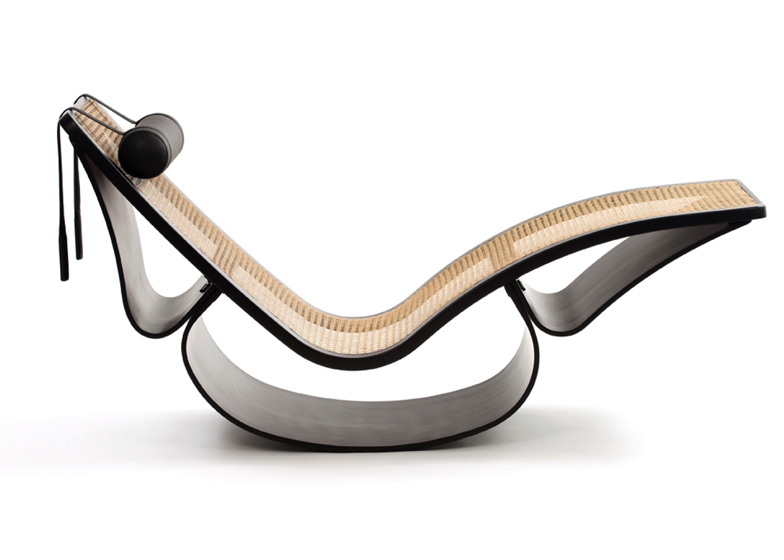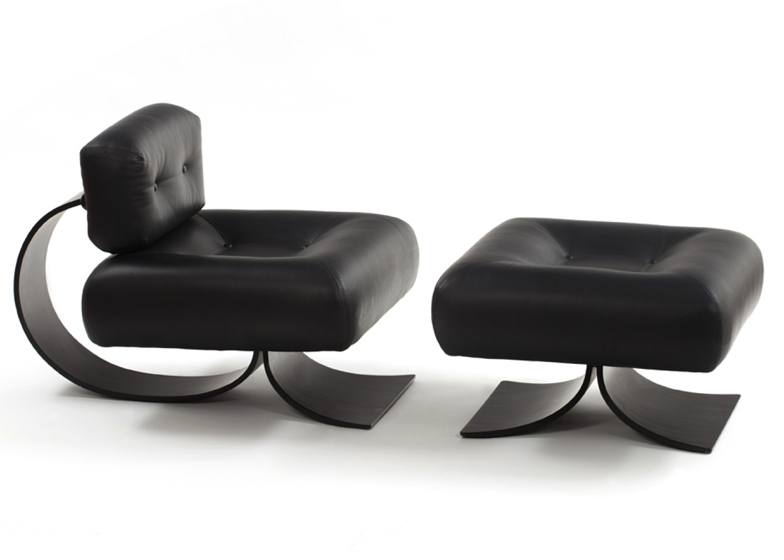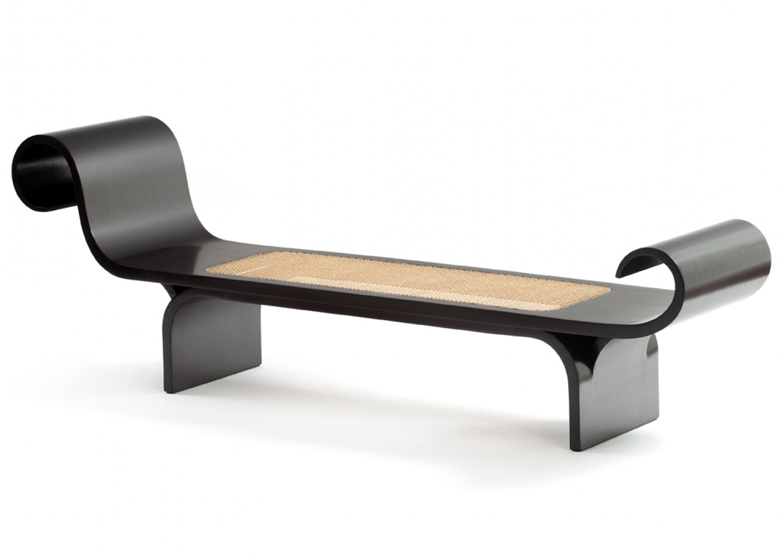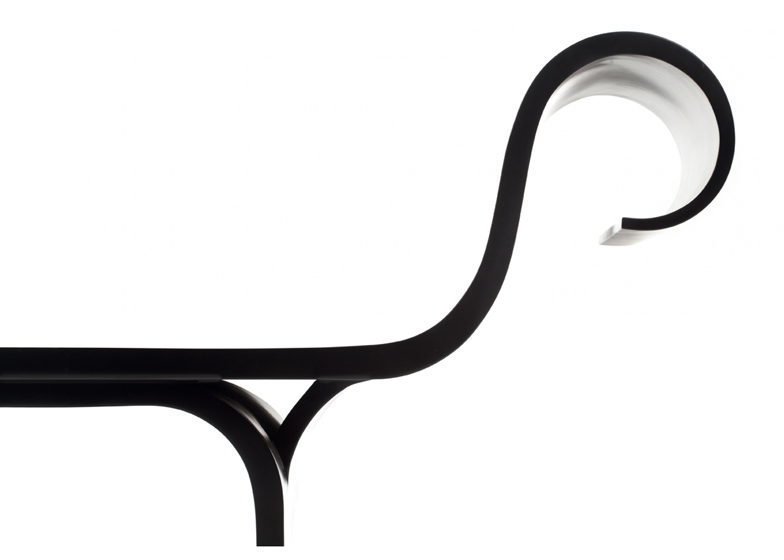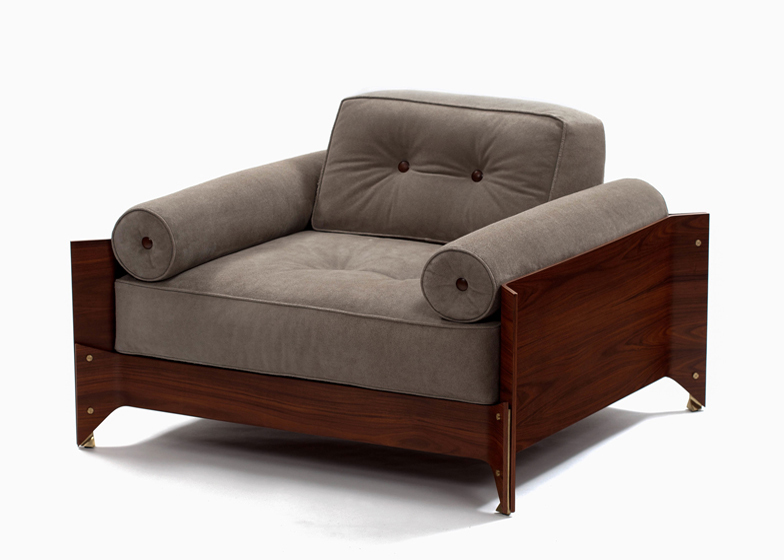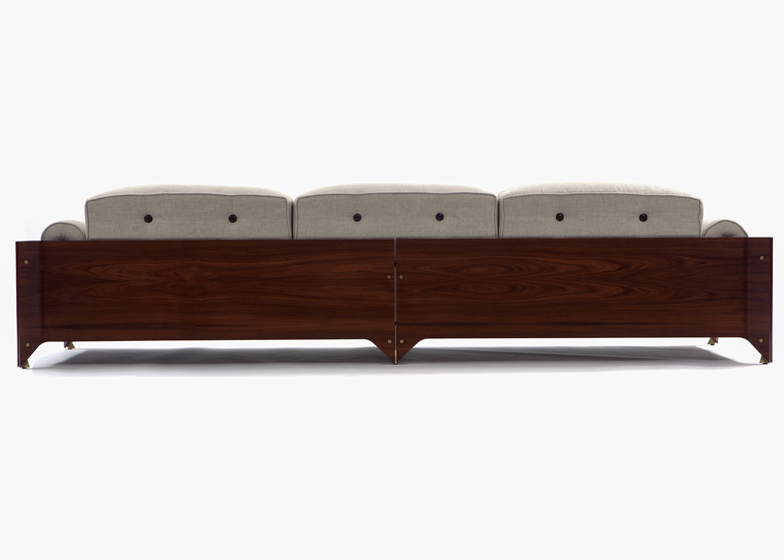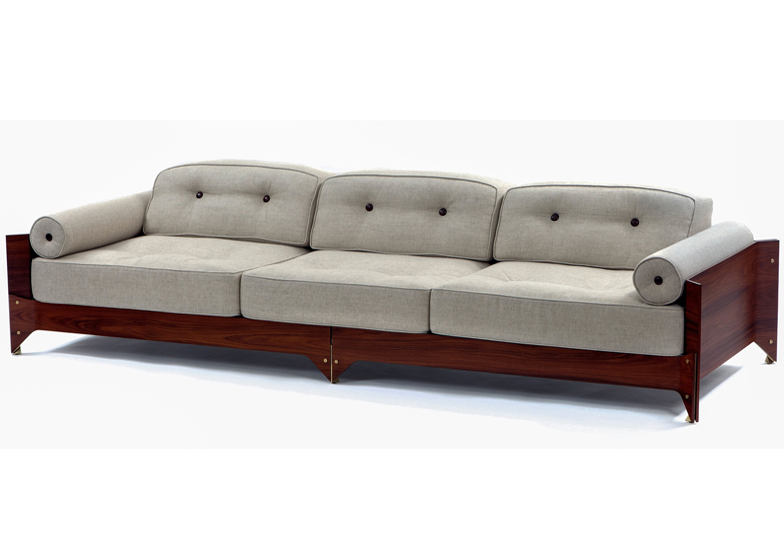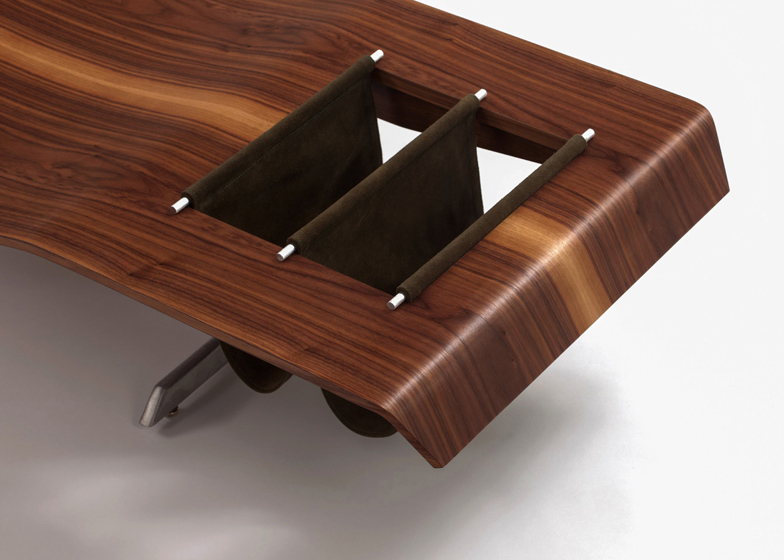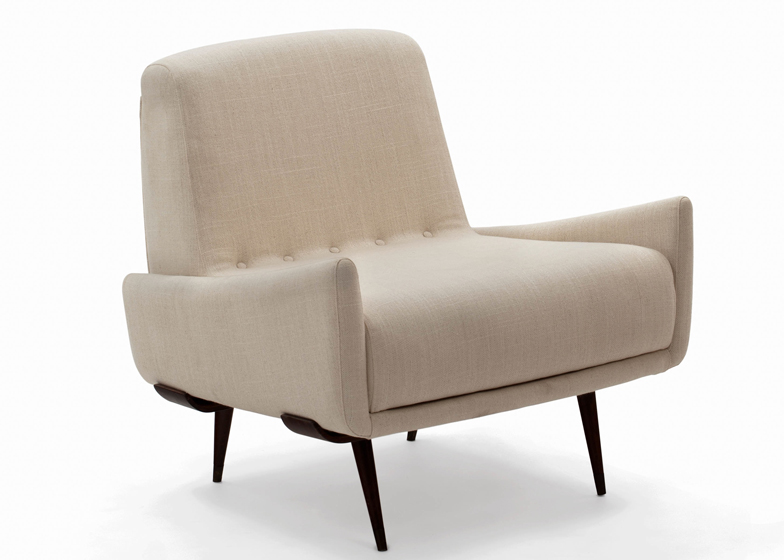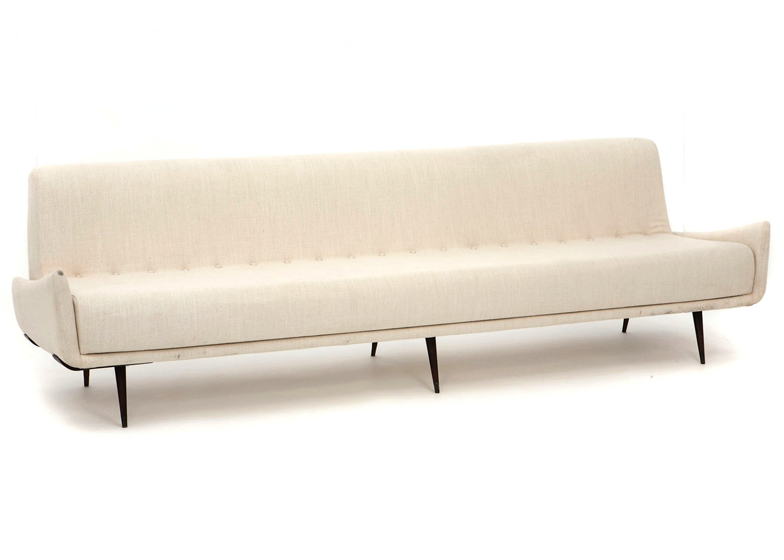New York 2014: New York design gallery and shop Espasso is launching a collection of re-issued furniture by late Brazilian architect Oscar Niemeyer and Polish-Brazilian architect Jorge Zalszupin (+ slideshow).
Espasso is celebrating the launch of the pieces, produced by Etel Interiores, with an exhibit called Compasso – Portuguese for "measure" – which marks the first time re-issued pieces by Modernist architects Niemeyer and Zalszupin will be available in the US.
"Oscar Niemeyer and Jorge Zalszupin are icons whose influence on architecture and design is unprecedented and far reaching," said Espasso owner and exhibit curator Carlos Junqueira. "We are honoured to be premiering these re-editions in America because each item tells a story of their innovative design, in addition to Oscar and Jorge's rich legacy."
The Niemeyer line features four pieces originally designed in the 1970s with his daughter Anna Maria Niemeyer: the Rio rocking chaise, Marquesa bench, Alta armchair and Alta ottoman and all bear an embossed coin from the Fundação Oscar Niemeyer authenticating their reissue.
The reissues are true to the original designs and use of materials, achieving Niemeyer's signature curves.
The Rio rocking chaise is made from an L-shaped caned seat on top of a curved sheet of bent lacquered wood, providing the rocking motion, and two further curves under the seat and back.
The Alta armchair and ottoman seats are shaped like plump square doughnuts upholstered in leather with curved sheets of lacquered wood as legs.
The Marquesa chaise is made from a long flat caned seat with curved lacquered wood embellishments.
Zalszupin's line features 20 pieces he designed in the 1960s, including Brasiliana armchair, PO 801 armchair, Circa bench and the Petalas side table.
These pieces were originally made from Jacaranda wood and Brazilian Rosewood, which are no longer available due to their endangered status, so they are now offered in alternative woods.
The PO 801 Armchair has a simple shape with wing-like arms and delicate legs and is offered in Sucupira, Freijó, Angelim or Cedar with leather or fabric upholstery. The chair features brass tip covers on its feet.
Zalszupin designed the Brasiliana armchair as an homage to Brasilia - the ultra-modern Brazilian capital designed by Niemeyer in the late 1950s and early 1960s. It has a squat square form with cylindrical arms and comes in Freijó with four finishes, American Walnut or Pau Ferro. Wooden carved buttons are used in the upholstery.
The Circa Bench is a long straight slab of Pau Ferro wood with two ergonomic waves cut into the surface on a geometric metal frame.
The Petalas side table references the folded paper structures of origami, and originally used the leftover pieces from another one of Zalszupin's piece, the Andorinha coffee table, for its fabrication.
In the 1950s, Zalszupin designed furniture for several of Niemeyer's buildings in the Brazilian capital Brasília. Niemeyer, who died aged 104 in 2012, is widely considered as Brazil's greatest Modernist architect.
The exhibition in New York is displaying both lines of furniture alongside a new monograph, Jorge Zalszupin: Design Moderno by professor Maria Cecilia Loschiavo dos Santos, which examines the designer's influence around the world.
It opened on Wednesday at 38 North Moore Street to coincide with New York design week, and continues until 3 June.

